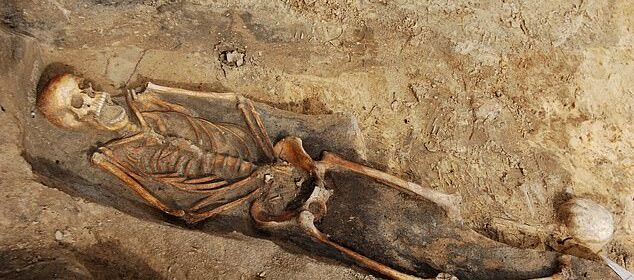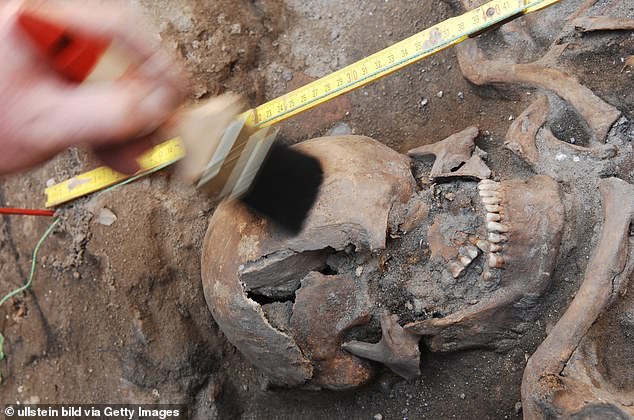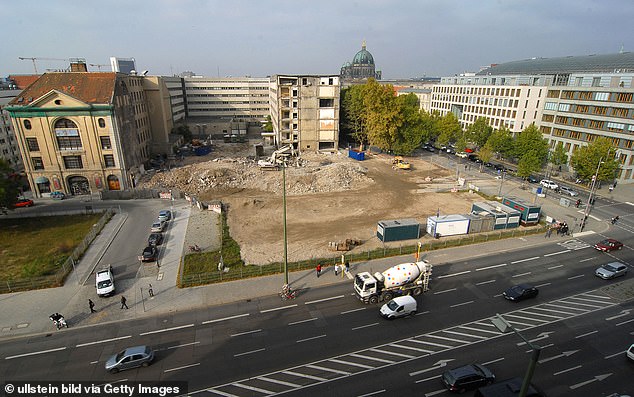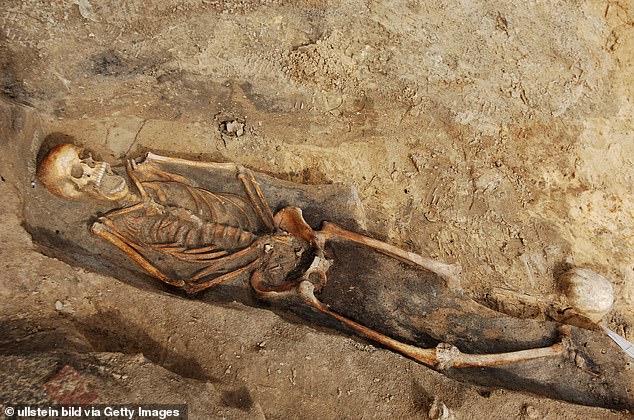Medieval cemetery discovered under a Berlin car park reveals its original residents’ lives

Medieval cemetery discovered under a Berlin car park reveals its original residents’ lives
A medieval cemetery discovered beneath a Berlin car park has revealed that its early inhabitants lived brutal lives plagued by conflict, disease and poor diets.
Almost half of the 3,700 human remains discovered date from the time between 1047 and 1299, when the German capital was founded.

Several male remains display signs of weapon destruction, while the skeletons of children reveal rickets, scurvy, and tuberculosis, both of which are caused by vitamin deficiencies.
The bones of three wealthy men who had been hacked across the head with axes and swords were also found crammed together in a wooden box.
One had his nose removed while another had been struck so hard across the jaw that his teeth fell out.
Archaeologists proposed the city’s savage origin after analysing the early remains located in Petriplatz near the former St Peter’s Church in the town of Colln, which had merged with Berlin by the 1400s.
One child’s skeleton unearthed – dubbed ‘ The Swimmer’ – was found heavily distorted with its back arched and arms crossed, suggesting a possible presence of tetanus in the city.
‘It can be explained if when the child was buried they were in cadaveric rigor, or extreme spasm, with the muscles of the back arms and legs all contracted,’ said archaeologist Natasha Powers from Allen Archaeology.
‘The position bears a striking similarity to that which occurs as a result of tetanus.’
The three male skeletons killed between 1168 and 1208 – known as the Kiste burial – bear wounds suggesting a violent end to their lives. The lack of former wounds also suggests the men were not soldiers, but were still targeted by assailants.

One body showed blows from a serrated blade to the head and fine cuts to the hands, suggesting he raised them in a desperate attempt to defend himself.
The second skeleton shows slices across the jaw knocking out teeth, meaning blows were applied with extreme force, and wounds to the forearm also suggesting an attempt at self-defence.
Fractures to the wrist were also identified, suggesting the man fell as he was attacked.
The third skeleton’s brain was likely penetrated by blows to the head, archaeologists said, killing him instantly. Wounds to the ankle also suggest he may have been pulled from a horse.
The bodies were found with a silver brooch, key and buckle, while one also had silver coins in his mouth, suggesting they were people of high status.
The remains of amputees, cancer sufferers and lepers from between 1050 and the 1700s have also been found at the site.

The havoc suffered by inhabitants bears links to the rule of Albert the Bear in 1157, who famously launched crusades against the pagan Slavs to the East.
Colln and Berlin first appear in historical records in the 13th century, although the remains suggest Colln may have existed up to a century before this date.
Albert the Bear also bequeathed his bear emblem to Berlin, which has appeared on its coat of arms ever since.